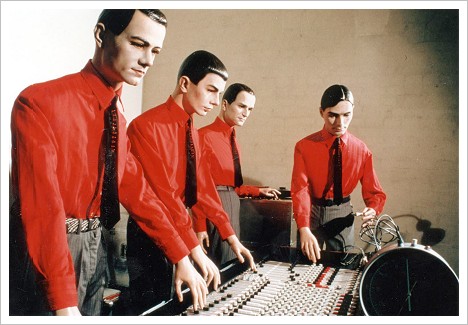
First of all, I prefer the term “Personas” to “Personae”. Doesn’t “Personae” just seem pretentious, n’est-ce que pas?
Anyway, the point is, I’ve always struggled, over the years, to find personas a useful tool in marketing. I’m specifically talking about marketing here, rather than user-centred design – I know these are two sides of the same coin, but my main concern is with their use in marketing.
The process of creating personas has often been interesting, perhaps even fun, but then when it comes to the next stage – of actually using them in some way to drive marketing effort – they never seem quite right and they never seem very usable. I think they can also be slightly dangerous – if the process for creating personas hasn’t been cast-iron, then you can find yourself making messaging and positioning decisions based on, what – a few Google searches, chats with a couple of customers and a few internal meetings? Not really good enough!
So I thought I’d describe the process I prefer to use. A key part of this, though, is the end goal. For me this is:
Resulting personas should be strong enough that they are believable, simple and genuinely useful for sales, marketing, user experience and any other member of the team.
This seems a little vague, but the point is – the usual problem with personas is that a lot of effort is made, some big pictures of archetypes are printed on the walls… then everyone gets on with their jobs, ignoring the work that’s been done. A persona should be so strong, that the sales team members recognise that person perfectly, have just spoken to five of them that week, and keep referring to the persona, without being hustled by marketing or UX.
So, the process I use is as follows, and is actually very simple:
- Start with some market segmentation. Don’t be tempted to jump in to personas yet, but start by trying to figure out a few basic segments for your market. There are lots of ways of doing this but, for me, the key point is to avoid personas at this stage. Why? Because it can bias your segmentation towards familiar and known archetypes, undermining the validity of your segmentation. For example, if you’d worked marketing mortgages for a living, and you’d always worked in the homeowner segment only, then you might be able to come up with a rich and powerful set of personas for types of mortgage owner such as “Young, stretched first-time buyer”, “30s affluent”, “Older, careful-with-money” and so on. These would be based on your biases about people you’ve encountered in your work. But what about Buy-to-Let borrowers? If you’ve never encountered them before, you wouldn’t even consider different BTL personas. It might be (I don’t know) that a quarter of all mortgages are lent to this group, and by missing out this group in your work, you’re forgetting to create personas for a key segment. If you start with a segmentation first, based on some real data, then you’ll be spending your efforts on persona creation in the most valuable areas.
- Once you have your segmentation, take the largest ones of most interest (2-4, any more can get confusing) and create personas based on these. NB: It may be, in the above example, that you’re just not interested in Buy-to-Let borrowers. Fair enough, ignore them, but at least you’re doing that based on real data.
- There are a lot of well-documented processes for creating individual personas. Your user-experience teams, if you have them, are likely to be of great help here. For me though, a guiding principle is that these have to be based on real people. I know this is obvious, but if the end goal is believable and useful personas, then these will only happen if you’re pulling out traits from people you’ve actually spoken to. In the example above, if you were trying to better define a “30s affluent” persona, you need to speak to some people in their 30s, who are genuinely affluent. Are they actually in their 20s, or 40s? Does age even matter? And do they feel affluent? What’s that based on? Then, when you go in to further characteristics (such as “Where do they go out?”, “What websites to they read?”, “What newspapers?”, “What sort of neighbourhoods do they live in?”, or whatever you’re interested in), these also need to be validated. It’s very easy to fall in to stereotypes here (“Go to the theatre”, “Read The Guardian” etc) but are these true or just projections of our own prejudices?
- Once you have some interesting personas, the next stage is to then validate and adjust these with customers. This is why I call this post “Lean Personas”. Rather than spending months coming up with perfect personas, then launching these in your marketing, I think it’s a lot more useful to do an initial, decent job, then to test these against the people you’re talking to, whether on the phone, at conferences, or wherever. Obviously you can’t ask someone “Would you consider yourself a 30s-affluent type!?”. But you can ask, as background, “What papers do you read?”, “Where do you go out?” and so on.
- Repeat steps 3 and 4 a few times, perfecting your personas as you go along. Of course you can start using these in early marketing, but the real value can often take quite a few months, if not longer – when you reach a point where your sales and other people are willingly using your personas to help them in sales conversations, and when you can classify people in to personas at the drop of a hat, because they’re so familiar and so right, then at that point, you’ve got some great personas going forward.
Good luck. I’m about to embark on this exercise myself, so I’ll write up how I get on!